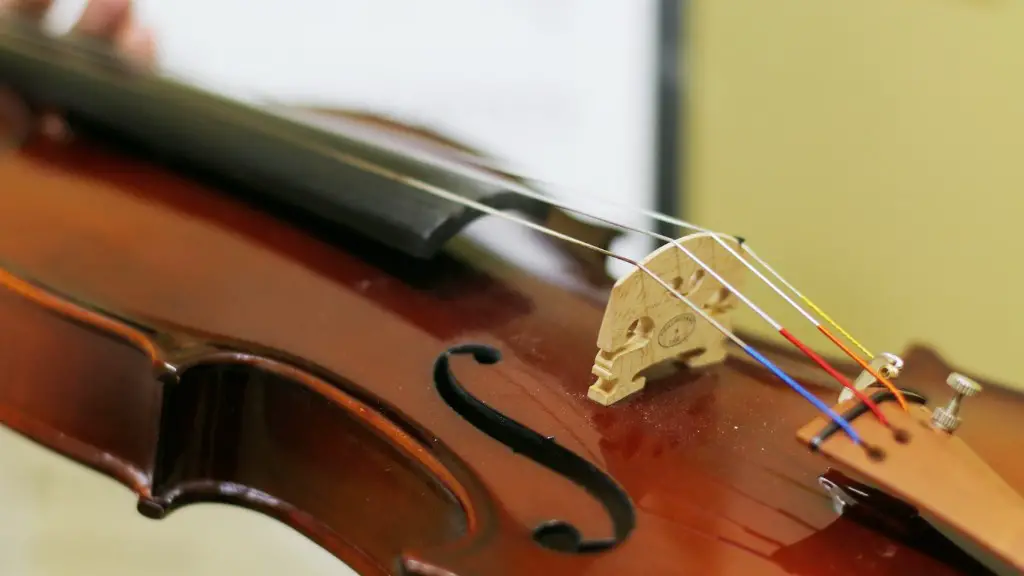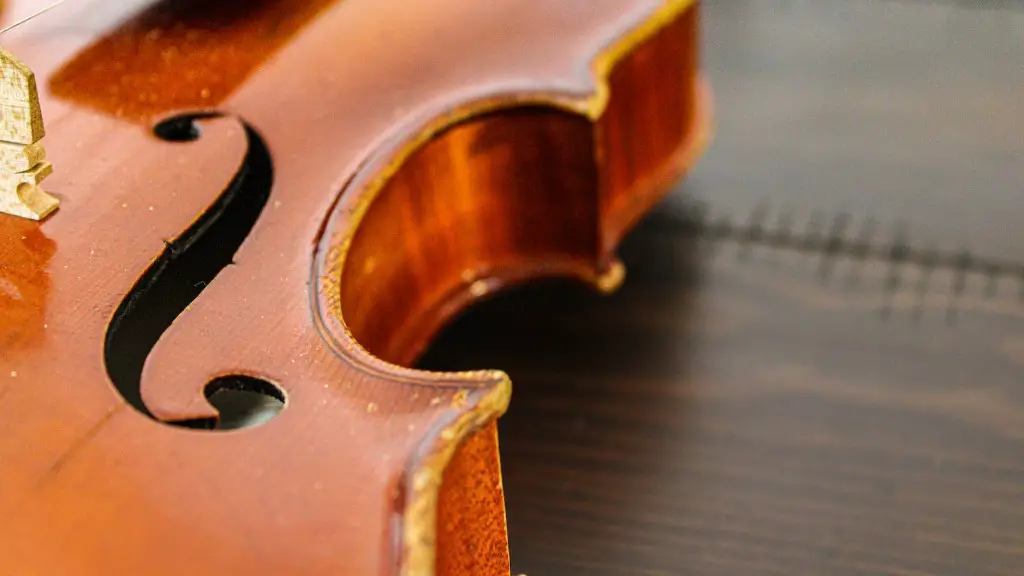Viola and violin are both string instruments that are popular in classical music. Both instruments require a great deal of practice and dedication to master, but which is easier to learn?
The answer is that it depends on the individual. The size of the viola is larger than the violin, and this can make it easier for some people to hold and play. Additionally, the strings on a viola are generally thicker than those on a violin, which can make it easier for beginners to press down on them. However, because of its larger size, some people may find the viola more difficult to maneuver.
The sound of the two instruments is also different. The viola has a deeper, richer sound, while the violin has a brighter tone. Some people may prefer one over the other depending on their musical tastes. Ultimately, choosing between a viola and a violin comes down to personal preference.
Disadvantages of Viola over Violin
The main disadvantage of a viola over a violin is its size. The viola is larger in size, making it difficult for smaller players to reach the strings and play comfortably. Additionally, because the strings are longer and thicker on a viola, they require more pressure to sound properly, making it more difficult to play than a violin. Furthermore, due to its size, the viola’s sound is deeper and fuller than that of a violin and may not be as appropriate for certain musical styles.
Viola music is also more challenging to read than that of the violin. Viola music is written in alto clef instead of treble clef like that of the violin. Alto clef is far less common than treble clef and can take some time to get used to reading properly. Additionally, much less music has been written specifically for the viola as compared to the violin which can make it difficult to find pieces that are appropriate for one’s skill level.
In conclusion, while there are some advantages of playing the viola compared to the violin, such as its deeper and fuller sound, overall most would agree that playing the violin is generally easier than playing the viola.
Difficulty Level of Playing the Two Instruments
The Violin and the Viola are both string instruments that derive from the same family, hence the similarities between them. However, the two instruments have their own distinct characteristics which make them unique from one another. When it comes to difficulty level, both instruments can be challenging to learn.
The Violin has a smaller size and lighter weight compared to the Viola, making it easier for young players to handle. It also produces a higher pitch than the Viola’s deeper sound. On the other hand, playing the Viola requires more physical strength due to its larger size and heavier weight. Furthermore, mastering this instrument requires further skill as it involves playing in various positions such as low on the shoulder or high on the chest.
Regardless of their differences in difficulty levels, learning to play both instruments requires significant practice and dedication. The key is to find what works best for you as a musician. Both strings require coordination of left hand fingerings with right hand bowings while focusing on musicality and sound quality. With sufficient practice and guidance from an experienced instructor, mastering these two instruments is achievable!
Learning Curve of the Two Instruments
The viola and violin are instruments that share many similarities, but also differ in several ways. In terms of difficulty, the two instruments present different learning curves. Playing the violin requires a great deal of practice and dedication to master, as it demands a high level of technical skill. The viola, on the other hand, is considered by some to be an easier instrument to learn. It can be mastered more quickly than the violin as it does not require as much precision and dexterity.
The viola is often seen as an ideal choice for those who are just starting out in classical music. Its larger strings allow for a more relaxed playing technique than is needed for the violin. Furthermore, its range is slightly lower than the violin’s, so it can be easier to play melodies that sound good with less effort. Additionally, many people find that learning how to play chords on the viola comes more naturally than with the violin.
In conclusion, although both instruments present their own unique challenges, the viola is generally considered simpler to learn than the violin. Those who are new to classical music may find it beneficial to start with a viola before tackling a more technically demanding instrument like the violin.
Musical Knowledge Required to Play the Two Instruments
Playing the violin and viola requires a strong base of musical knowledge. A basic understanding of music theory is essential, as this will help players develop an understanding of how notes and chords work together. Additionally, a familiarity with the various techniques and styles used in playing these two instruments is also important. Both instruments require an ability to read sheet music, as well as a good sense of rhythm and timing.
The violin and viola are two very different instruments. In general, the violin is considered more difficult to play than the viola due to its smaller size and higher string tension. This means that learning to play the violin requires greater finger dexterity and strength than that required for playing the viola. Additionally, the violin has a wider range of tones than the viola, making it much more challenging to master.
Posture and Physical Strength Needed for Playing the Two Instruments
Playing the violin and the viola require a specific posture and physical strength. When playing the violin, a player should stand or sit upright with their shoulders relaxed and arms slightly bent. The instrument should be held close to the body for stability, and the bow should be held in a comfortable position. For viola players, they must also maintain an upright posture with their arms slightly bent. However, due to its larger size, viola players must hold their instrument further away from their bodies in order to reach all of the strings.
Both instruments require good physical strength in order to produce beautiful sounds. Violinists must have strong wrists and arms to hold their instrument up while playing, as well as good coordination between their left and right hands when playing difficult passages. Similarly, viola players must have strong wrists and arms for holding up their instrument as well as strong fingers for fingering each string correctly. In terms of difficulty level, most people say that playing the violin is slightly more challenging than playing the viola due to its smaller size that requires more precision when fingering strings.
Techniques for Playing the Two Instruments
Learning how to play the violin or the viola can be a challenging yet rewarding journey. Both require a great deal of practice and dedication, but the skills you learn from playing either instrument are invaluable. Violin is generally considered to be slightly more difficult than viola, but it also offers more musical possibilities. The key difference between these two instruments is the size of their strings. Violin strings are thinner and harder to press down, which can make playing long passages more difficult. On the other hand, viola strings are thicker and easier to press down, making it easier for beginners to play.
Regardless of which instrument you choose to learn, there are several techniques that can help you improve your playing. For instance, posture is important when playing either instrument; maintaining proper posture will ensure that your hands and arms remain relaxed while playing. Additionally, focusing on finger placement and using vibrato will give your music more expression and depth. Lastly, practicing scales regularly will help you develop muscle memory so that you can play faster and with greater accuracy.
Both violin and viola have unique sounds that can be used to create beautiful music when played correctly. With dedication and practice, anyone can learn how to play either instrument with ease – so why not give it a try? No matter what instrument you decide to pick up, remember that mastering it takes time and patience.
To Sum It All Up
In conclusion, the viola is not necessarily easier to play than the violin. Both instruments require a significant amount of practice and dedication in order to master them. The viola is slightly larger and heavier than the violin, which can make it more challenging for some players. Additionally, the range of notes on the viola is larger than that of the violin, so it may take more time to learn how to play all of them correctly. However, with enough practice and dedication, both instruments can be played with ease. In the end, it all comes down to personal preference.





